Explore the art of smoking pork steaks, a flavorful and tender delicacy that’s a sure hit at any BBQ gathering.
Smoking pork steaks to perfection involves a few key steps: selecting the right cuts, preparing a flavorful rub, maintaining the ideal smoker temperature, and timing the process just right.
This article offers a comprehensive guide on how to smoke pork steaks, outlining each step in detail. From choosing the best wood for smoking to determining when your pork steaks are perfectly done, this guide covers everything you need to know.
Stick around to discover the secrets of smoking pork steaks that are juicy, tender, and packed with flavor.
Key takeaways:
- Pork steaks come from the shoulder or Boston butt.
- Recommended thickness for smoking is 1-2 inches.
- Ideal smoking temperature is 225°F.
- Cook until internal temperature reaches 145°F.
- Let the steaks rest for 3-5 minutes before serving.
What Are Pork Steaks?
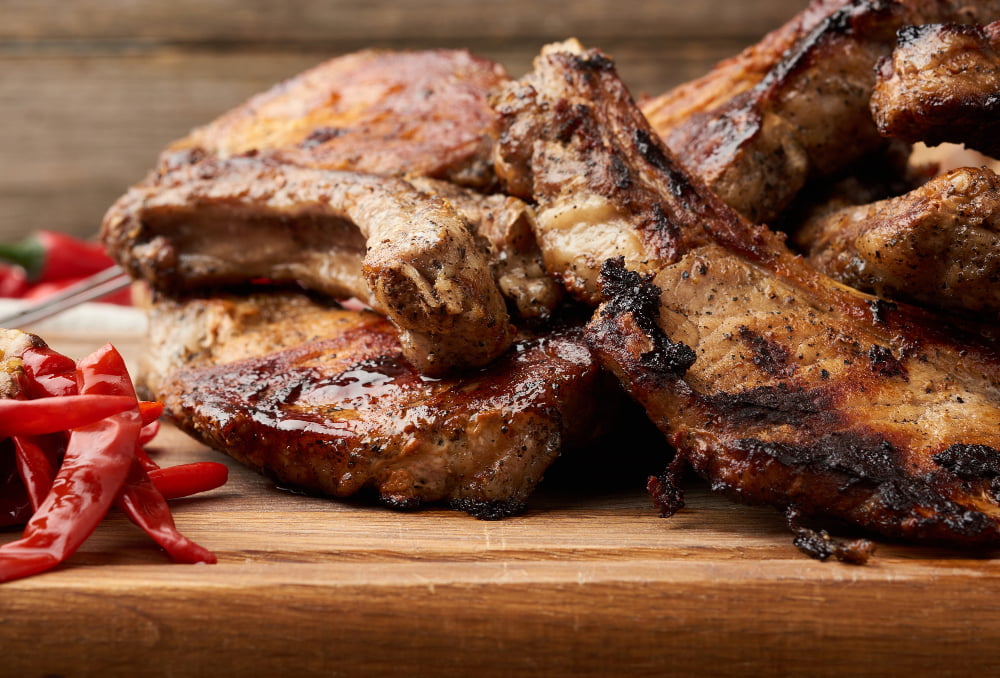
Pork steaks, which originate from the pork shoulder or Boston butt, make a delicious option for grilling and smoking. They are characterized by a tender texture and rich flavor profile due to the marbled fat content. When cut, these steaks typically include a section of the shoulder blade, hence the alternate name, blade steaks.
Here are the key points to understand about pork steaks:
- The cut: Pork steaks come from the shoulder or Boston butt, an area known for its rich flavors, ideal for slow-smoking.
- Marbling: This term refers to the white flecks of fat within the meat, which melt during cooking creating succulent and flavorful pork steaks.
- Portions: Depending on your butcher or meat provider, pork steaks can range in thickness. An optimal thickness for smoking is between 1 and 2 inches.
- Flavor: Pork steaks are more flavorful than some other cuts due to the fat content and connective tissue, which break down during the smoking process adding to the meat’s tenderness and juiciness.
As a guideline, always request your butcher for the freshest cuts, keeping in mind the factors of marbling and cut thickness. With pork steaks, attention to prep and cooking details can transform this modest cut into a feast for the senses. Remember, any smoking or grilling process plays a crucial role in locking in the meat’s natural flavors.
Ingredients for Smoked Pork Steaks
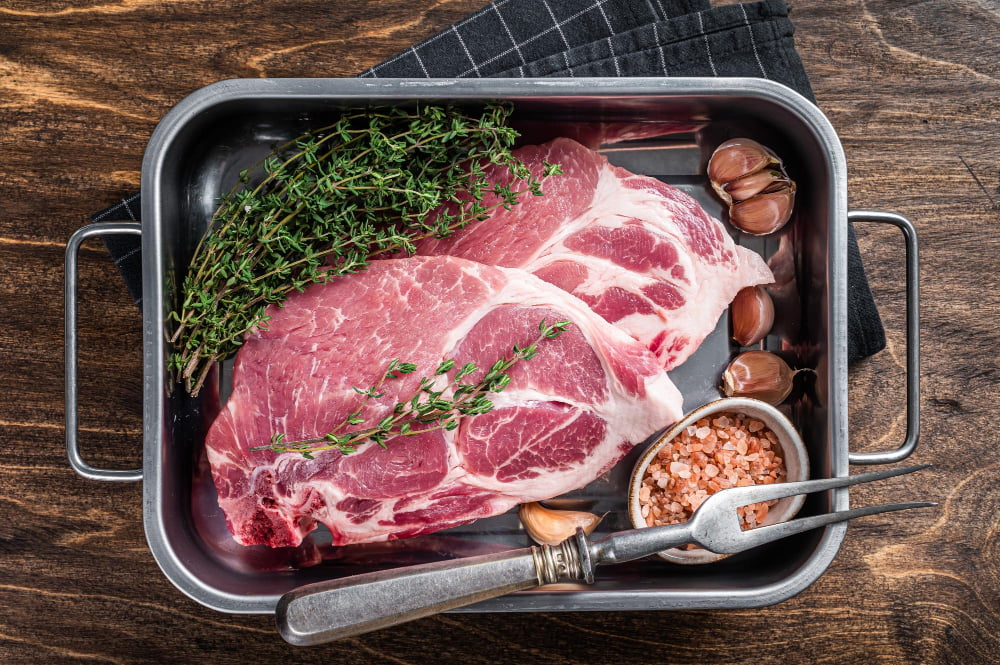
Pork Steaks: Tender and juicy meaty slabs, ideally cut from the shoulder is an excellent choice, as this part retains moisture well when smoked.
BBQ Rub: A balanced blend of spices like garlic powder, onion powder, paprika, salt, pepper, and brown sugar. The rub is crucial for infusing depth of flavor to the pork steaks.
BBQ Sauce: A good quality sauce enhances the overall taste of the smoked pork. A slightly tangy and sweet kind works great.
Apple Cider Vinegar: Using this in a spray bottle will keep the pork steaks moist during smoking and add a subtle apple flavor that complements pork.
Wood Chips: Choose wood chips that lend a mild, sweet smoke, like apple or cherry. These woods won’t overpower the flavor of the pork.
Butter: A dab of butter adds succulence and rich taste to the finished steak. It also creates a nice crust on the steaks when they’re smoked.
Extra seasonings (optional): For those who like a kick, a sprinkle of crushed red pepper flakes or cayenne pepper can be added.
Remember, accurate measurements of these ingredients will affect the outcome of the steaks, so stick to the proportions recommended in the recipe when preparing your smoke.
How to Prepare for Smoking Pork Steaks
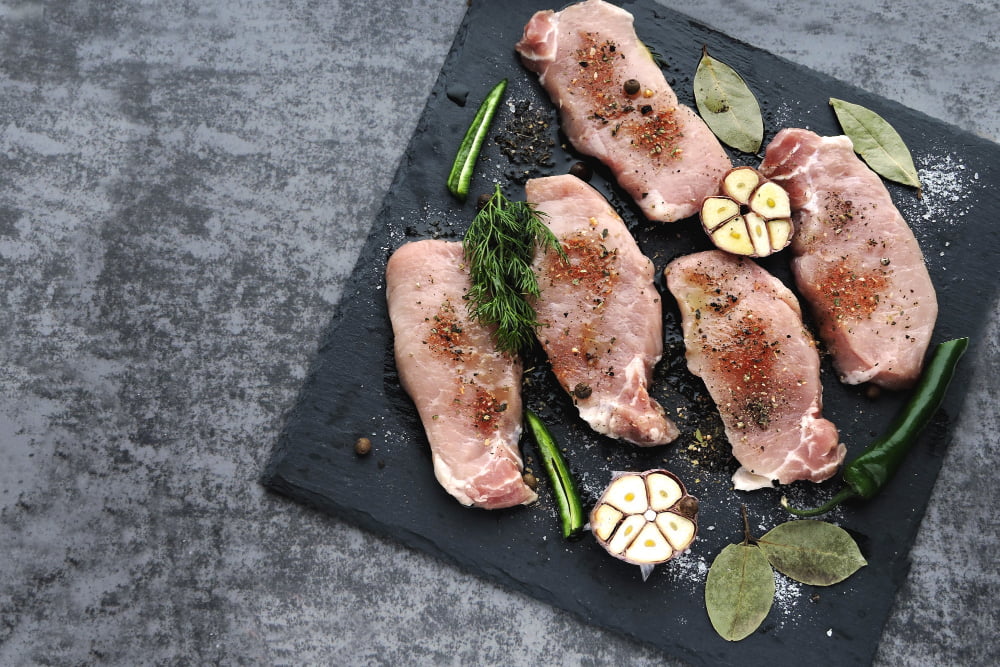
Before delving into the smoking process, it’s crucial to set the stage with proper preparation.
First, select good-quality pork steaks. Aim for steaks that have a decent marbling of fat, which enhances flavor during the smoking process.
Next, season your pork steaks. A simple seasoning can suffice, such as a mix of salt, pepper, paprika, and brown sugar, or you can try using a pre-mixed BBQ rub. Ensure all sides of your steaks have been generously coated for maximum flavor absorption.
Now, take a moment to preheat your smoker. Aim for a temperature of about 225°F. This is an optimal temperature for smoking pork, as it allows for a slow and even cook. Preheating also eliminates any bacteria that might be lingering on your smoker grates.
If using a charcoal smoker, get your charcoals burning, then add the wood chips on top. If you’re using a gas or electric smoker, add your wood chips to the smoker box.
Lastly, prepare a water tray to add moisture during smoking which makes your pork steaks tenderness. Fill half the tray with water and place it inside your smoker.
The focus here is on effective preparation, from selecting the right steaks, the appropriate seasoning, preheating your smoker, setting up charcoals or wood chips, and arranging the water tray. This preparation paves the way for an efficient and enjoyable smoking experience.
Steps On How to Smoke Pork Steaks
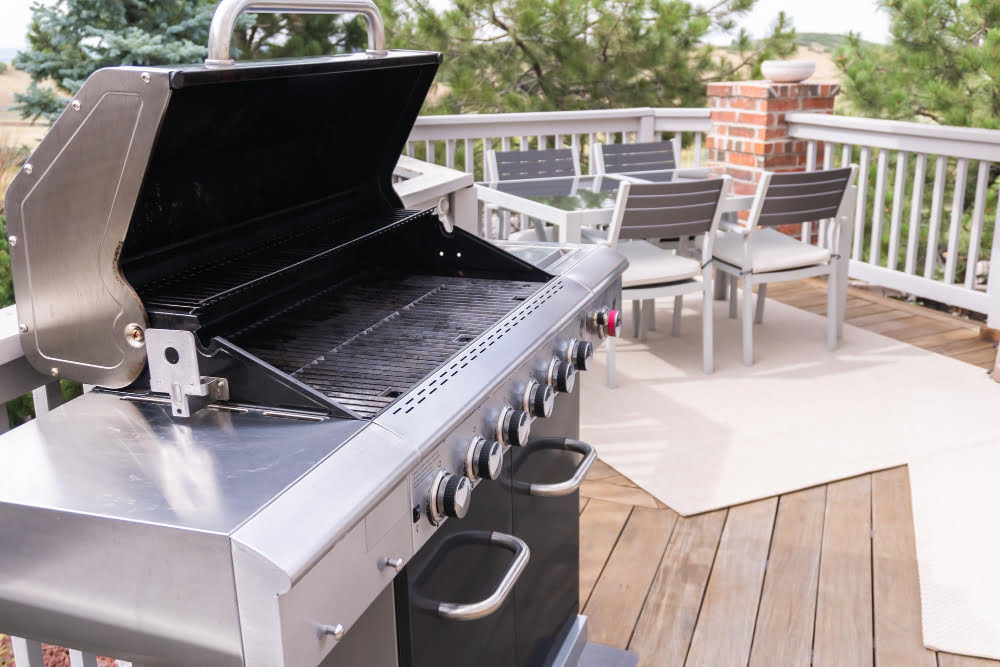
Begin by patting dry the pork steaks to ensure the rub adheres properly. Prepare the rub comprising of a mix of brown sugar, paprika, garlic and onion powder, and season liberally on both sides of the steaks.
Once prepared, preheat the smoker to a temperature of 225 degrees Fahrenheit. While the grill preheats, allow the steaks to rest and absorb the flavors of the rub.
Post preheating, place the pork steaks on the smoker, away from direct heat. Close the lid and let the smoke do its work. Remember not to flip or move the steaks frequently to maintain the steady heat and smoke build-up.
Use a meat thermometer to monitor the internal temperature of the steaks. Cook until the steaks reach an internal temperature of 145 degrees Fahrenheit as recommended by the US Food Safety and Inspection Services for pork consumption.
Once the desired temperature is reached, remove the steaks from the smoker. Allow it to rest for a good 3-5 minutes before serving. This resting period allows the juices to redistribute throughout the steak, making it tender and juicy.
During this process, ensure the smoker retains a consistent temperature and ample smoke. Should the smoker’s temperature drop or the smoke reduce, add more charcoal or wood chips. Always maintain safety measures when handling the hot smoker and coals.
How Long Does It Take to Smoke Pork Steaks
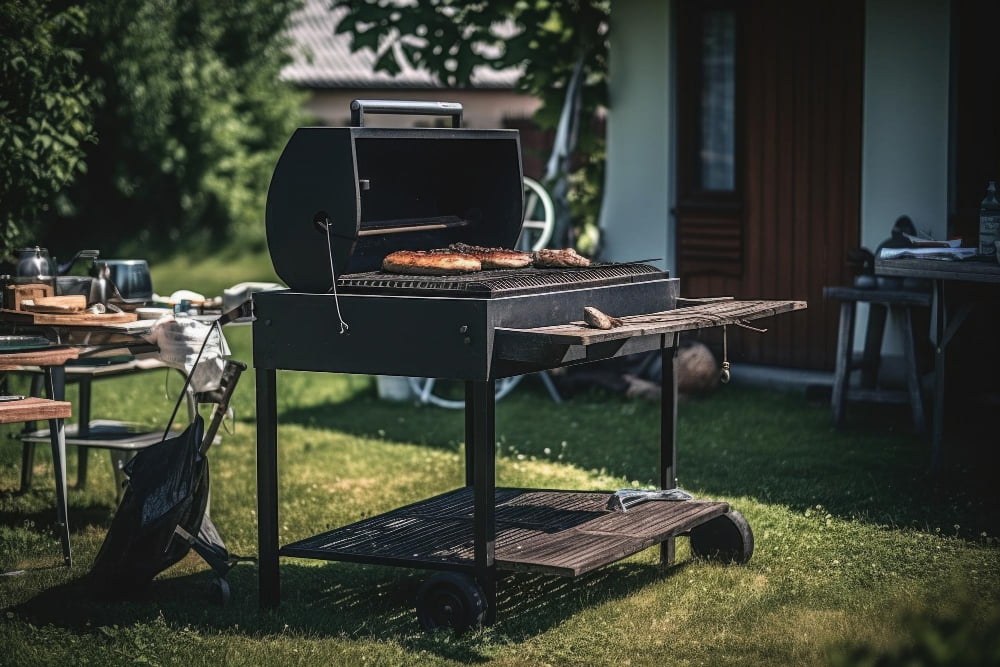
The smoking process for pork steaks is typically divided into two stages. Initially, you smoke the pork steaks at a low temperature (225°F to 250°F) for two hours. This low and slow method allows the smoke to penetrate the meat to optimize flavor.
Next, you’ll usually need an additional one to two hours at a raised temperature (around 275°F) to have a searing effect on the outside of the meat. This helps lock in the juices while creating a savory crust.
During this stage remember to occasionally flip the steaks and brush them with your favorite BBQ sauce for an added layer of flavor. Time may vary depending on the thickness of your steaks and the specific temperature of your smoker so it’s crucial to regularly check the internal temperature of the meat.
To confirm your pork steaks are thoroughly cooked and safe to eat, use a meat thermometer. The U.S. Department of Agriculture recommends a minimum internal temperature of 145°F for whole pork cuts, followed by a three-minute rest time.
The entire smoking process will take roughly three to four hours, but be prepared to adjust based on your specific setup and the steaks themselves. Trust the thermometer over the clock to ensure perfectly smoked pork steaks every time.
During the waiting period, consider preparing your side dishes, setting the table or clean the area around your smoker.
Temperature Guide for Smoking Pork Steaks
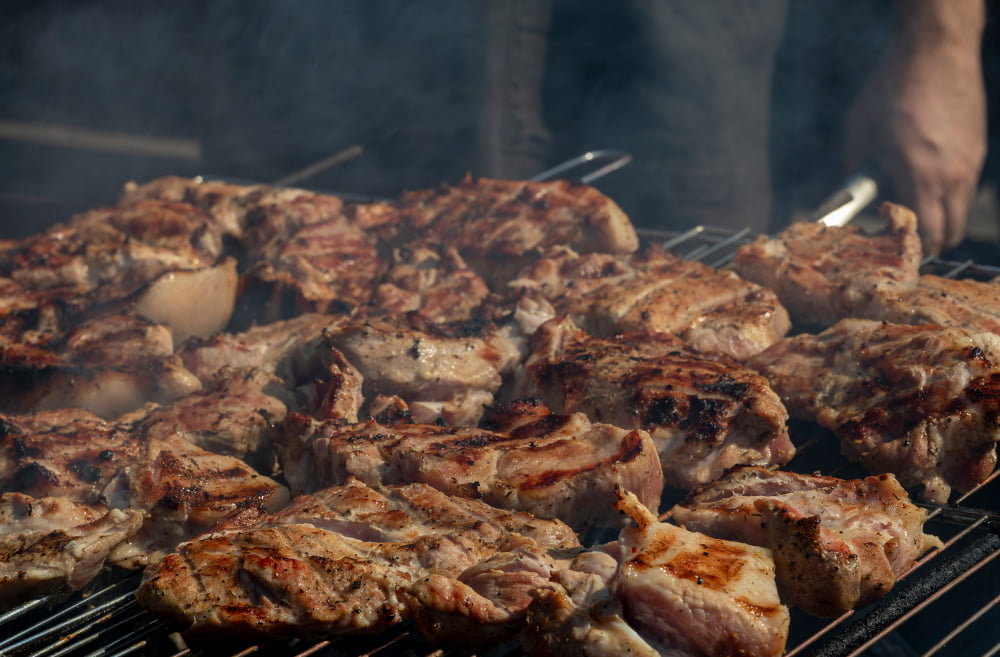
Understanding the perfect temperature for smoking pork steaks is crucial to achieving that tender and juicy result.
Firstly, set your smoker to preheat at 225 degrees Fahrenheit. This is the optimal temperature for smoking most meats, including pork steaks, as it allows the meat to cook slowly, retaining its moisture and flavor.
Next, let’s talk about internal temperatures. When your pork steaks have an internal temperature of 145 degrees Fahrenheit, they are safe to consume. However, if you prefer your steak tender, aiming for an internal temperature of 160 degrees Fahrenheit will further break down the collagen in the pork, resulting in a more tender bite.
A probe thermometer is recommended for accurate temperature measurements. By inserting it into the thickest part of your steak, you can ensure that your pork steaks are smoked evenly and appropriately.
Remember to let the pork steaks rest after removing them from the smoker. During this period, carryover cooking will occur, raising the temperature of the steak by a few more degrees. This resting period also allows the meat’s juices to redistribute, resulting in a juicier steak.
Adjustments might be necessary based on your smoker’s performance and outdoor conditions. These are only guidelines, the key to mastering the art of smoking pork steaks lies in experimentation and practice.
These temperature guidelines will give you a good start to ensuring that your smoked pork steaks turn out perfect every time.
Tips for Smoking Pork Steaks
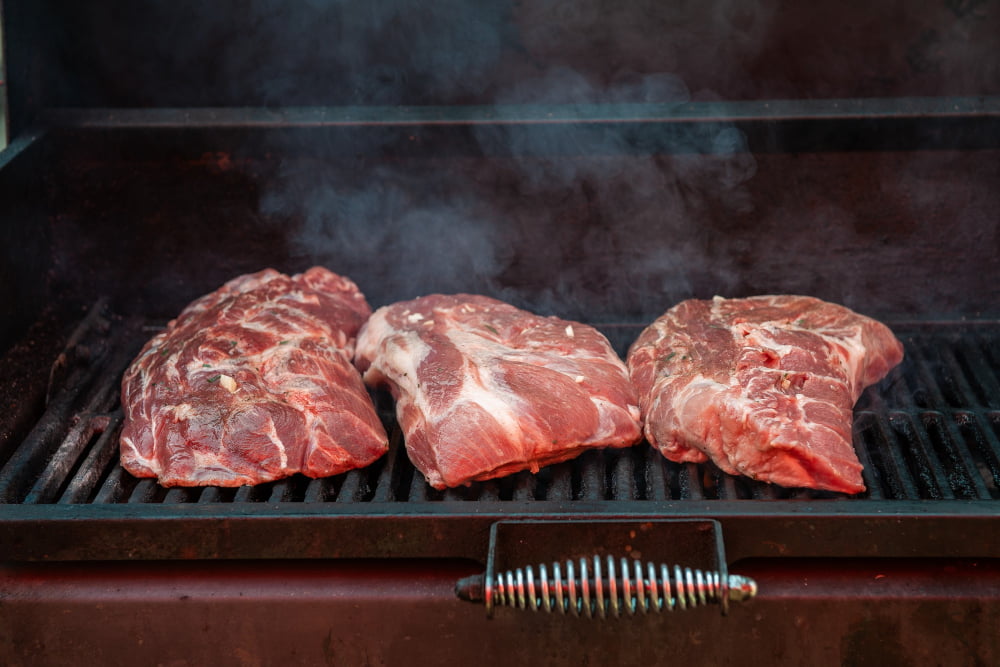
Opt for medium-sized pork steaks, around 1 inch thick, since thin cuts may overcook quickly during the smoking process.
Ensure the steaks are at the optimum temperature before smoking to ensure even cooking. Let them sit at room temperature for about an hour before smoking.
Season generously. Pork steaks have a robust flavor that can handle substantial seasoning. Spices like paprika, ground mustard, onion powder, and garlic powder work well.
Use the right type of wood chips for desired flavor. Fruitwood varieties such as apple and cherry can provide a sweet, mild smoked taste ideal for pork.
Monitor cooking temperature closely using a trusted meat thermometer for accurate readings and to avoid over or undercooked meat.
Baste during smoking to keep the meat moist and add more flavor. Use either a store-bought BBQ sauce or a homemade baste.
Let the pork steaks rest after smoking. Allow wrapped steaks to rest for 10-15 minutes after smoking, before cutting into them, to let the juices redistribute.
Experiment with ‘low and slow’ cooking. Lower smoking temperatures for longer periods can result in tender, juicy pork steaks.
Keep the smoker lid closed as frequently as possible to maintain temperature levels and reduce cooking time.
Rotate or flip the steaks at least once during the smoking process for even cooking. Remember, every time you open your smoker, you’re letting out heat and smoke.
Finally, practice safety precautions during smoking. Use heat-resistant gloves and long-handled tongs to prevent injuries.
Smoked Pork Steaks Recipe

For a succulent batch of smoked pork steaks you will need:
- Pork steaks, ideally about 1 inch thick.
- A dry rub of your choice. Homemade or store-bought, both work. This adds flavor to your meat.
- Barbecue sauce, optional but recommended for that classical BBQ taste.
- Wood chips for smoking. Apple, hickory, or mesquite are great choices.
Now for the process:
1. Once you have your pork steaks, pat them dry using a paper towel.
2. Apply your dry rub generously on both sides of the steak. Ensure that every part is well coated.
3. Allow your pork steaks to rest so that the rub permeates into the meat. This can take a few hours.
4. Preheat your smoker according to manufacturer instructions. Aim for a temperature of around 225 degrees Fahrenheit.
5. Once your smoker is ready, place your pork steaks on the grill rack. Be careful to leave a little space between each of them.
6. Smoke the pork steaks until they reach an internal temperature of 145 degrees Fahrenheit. This can typically take around 1.5–2 hours.
7. For the last 30 minutes of smoking, you may wish to slather some barbecue sauce on the steaks.
8. Remove the pork steaks from the smoker and let them rest for a few minutes before serving.
Remember that every smoker is different so be attentive and adjust timings and temperatures as necessary.
Notes for Smoking Pork Steaks

Before starting the smoking process, make sure the pork steaks are at room temperature which helps for an even cook. To amplify flavor, consider a dry brine with kosher salt, placing the meat in the fridge for several hours or overnight before you plan to smoke.
For a more permeating smoky flavor, a shallow scoring on the surface of the steak allows the smoke to penetrate deeper into the meat. While smoking, avoid opening the smoker frequently as this can let the smoke and heat escape, negatively affecting the cooking time and flavor infusion.
When determining doneness, refrain from relying on color alone since smoked meats can retain a pink hue even when fully cooked. Instead, trust in a reliable meat thermometer. Also, remember the concept of carry-over cooking where the meat continues to cook even after being removed from the heat; thus, removing it a few degrees shy of the target will result in a perfectly cooked steak once rested.
Lastly, allow your smoked pork steaks to rest for a bit after smoking. This resting period enables the juices to redistribute throughout the steak, making it moist and palatable. It is best to tent your steaks in aluminum foil during this resting period to keep them warm.
Common Questions About Smoking Pork Steaks
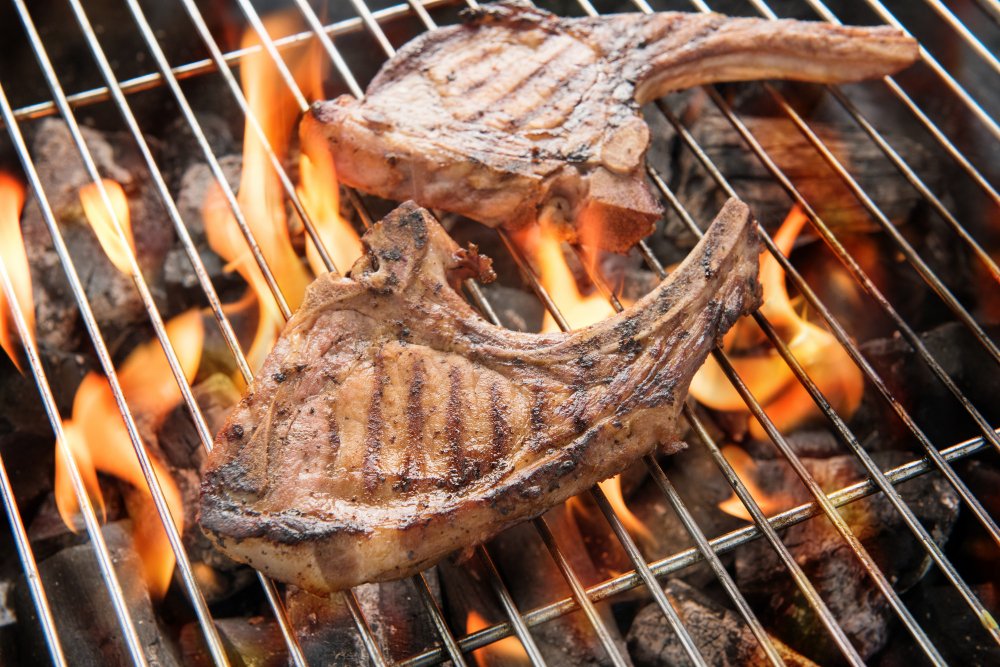
Many people ask if it’s necessary to brine the pork steaks before smoking. Brining helps to tenderize the meat and infuse it with flavor, but it’s not a mandatory step. It depends on personal preference and available time.
Another common question is if you can smoke pork steaks without a smoker. While a smoker offers the best flavor and texture, a grill can also do the job. Simply use indirect heat and wood chips to generate the smoke.
Sometimes, people aren’t sure about the internal temperature for pork steaks. The USDA recommends that pork steaks reach an internal temperature of 145°F (63°C) for safety. A digital thermometer is the most accurate way to check this.
A lot of people wonder whether to wrap the pork steaks during smoking. Wrapping in aluminum foil, also known as the Texas crutch, can speed up cooking time and keep the meat moist. However, it’s an optional step since wrapping can sometimes soften the bark, or the meat’s smoky outer layer.
Knowing when the pork steaks are done can be tricky. The texture, rather than just the color, can be an indicator. The meat should be tender enough to pull apart with a fork.
Finally, some question what type of wood is best for smoking pork steaks. While it’s largely a matter of personal preference, fruitwoods like apple and cherry or hardwoods like hickory or oak are common choices. They each impart a unique flavor to the meat.
Nutritional Information of Smoked Pork Steaks
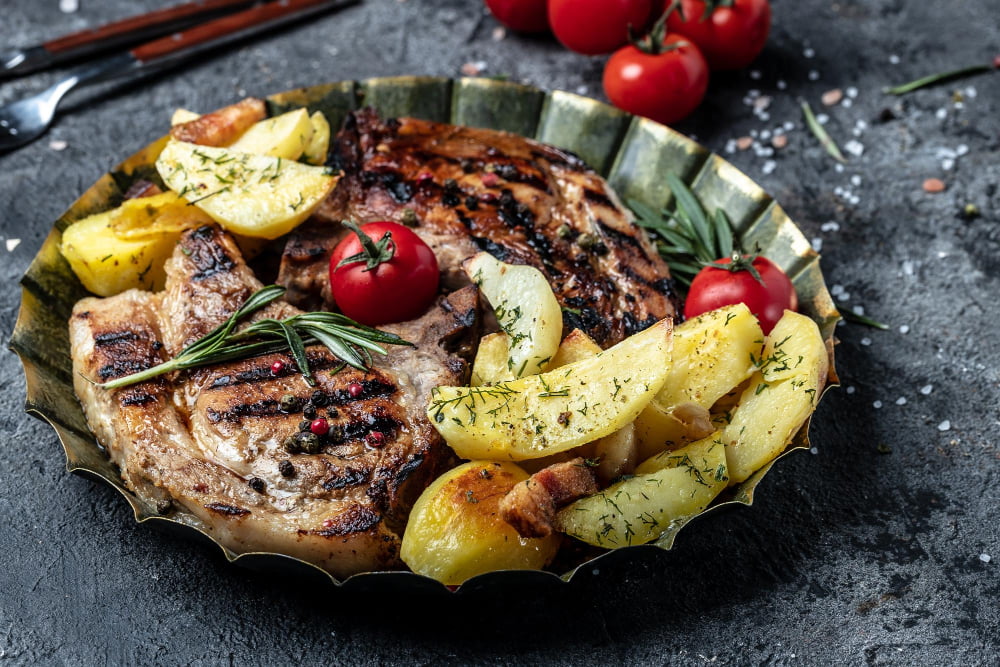
When it comes to the nutritional profile, pork steaks, particularly the ones smoked, provide a good source of valuable nutrients.
Firstly, protein plays a significant role. Pork is known for its high-quality protein, vital for body repair and immunity. A regular-sized pork steak can offer approximately 22 to 24 grams of protein.
Essential B-vitamins are abundant in pork. Notably, Vitamin B1, also known as thiamine, is present in high amounts. It’s crucial for brain function and helps convert food into energy. Other B-vitamins like B6 and B12, important for central nervous system function and blood formation respectively, are also found.
Iron, which helps to carry oxygen in the blood, is present in pork steaks. And compared to other meats, the iron in pork is in a form that’s easier for your body to absorb.
Fat content can vary. Lean cuts from the loin will have less fat than a shoulder cut. Nonetheless, the smoking process can help render some of the fat, reducing the overall fat content.
Lastly, sodium is common in smoked pork steaks due to the rubs or marinades used. Controlling sodium levels is essential for maintaining healthy blood pressure. Opting for low-sodium rubs and marinades can help reduce sodium intake.
It’s also important to consider portion size. While pork steak offers many nutritional benefits, consuming it within a balanced diet is key for overall health.
Storing and Reheating Smoked Pork Steaks
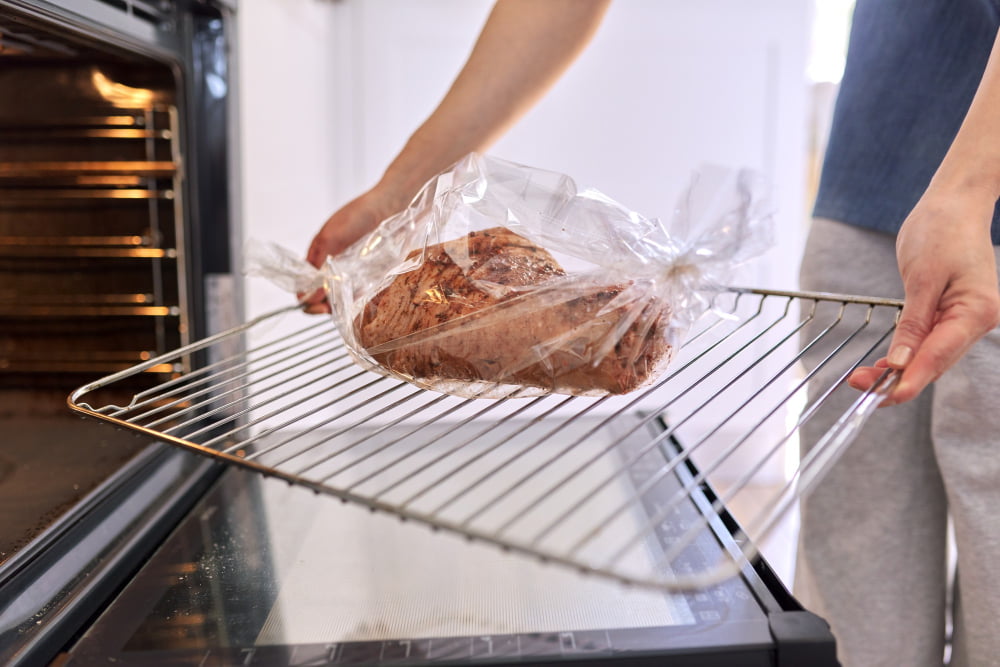
Smoked pork steaks can be kept in the refrigerator for up to 4 days. They should be cooled completely and stored in an airtight container to preserve their smoky flavor.
For longer storage, freezing is an option. Frozen smoked pork steaks can last up to 3 months without loss of quality. Wrap each steak individually in aluminum foil or freezer paper then place in a freezer bag, removing as much air as possible.
To reheat, if refrigerated, they can be placed in a 325°F oven until warmed through, usually around 20-25 minutes. For a crispier finish, a quick sear on a hot pan can add a delightful texture.
For frozen steaks, reheating them directly from the freezer is possible, but will take longer. A temperature of 325°F will still be suitable. Alternatively, defrosted steaks can follow the same reheating guidelines as refrigerated steaks.
Remember, the aim is to warm the steaks without drying them out. Therefore, reheating should be performed at a slow and low temperature. Adding a touch of moisture like a splash of apple juice or water in the reheating dish can help prevent the meat from drying out.
Smoking Pork Steaks Video Guide
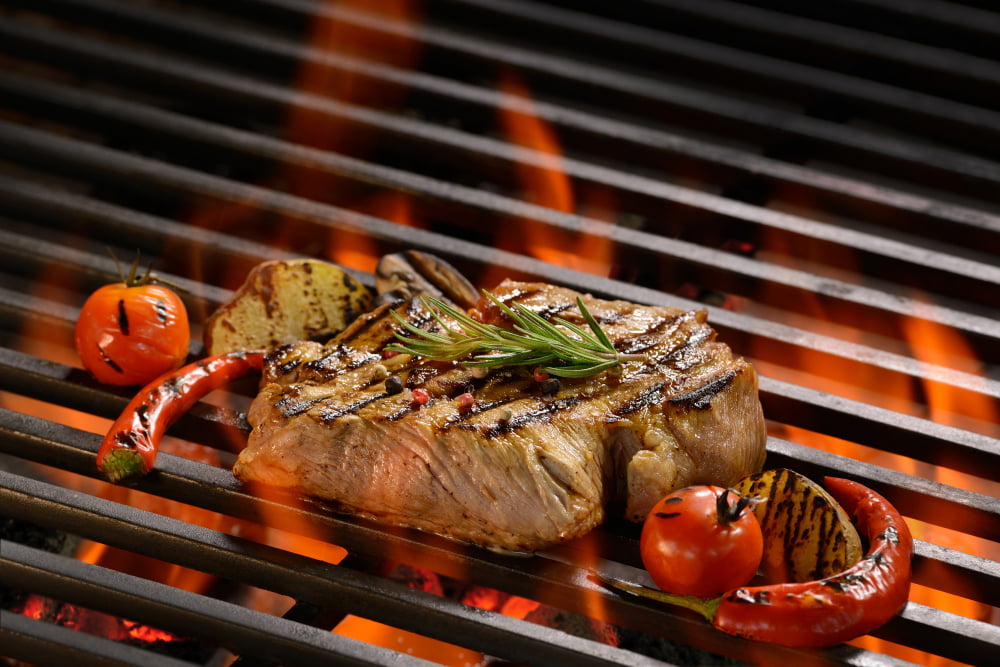
For visual learning, a video guide can come in handy. Let’s delve into what you can expect in the guide.
- Explanation on selecting pork steaks: The video offers a thorough process of what to look for when choosing your pork steaks and how their quality can affect the final smoked product.
- Direct step-by-step process: From prep to lifting the lid off the smoker, each step is demonstrated in detail, giving you a clear understanding of what to do at each stage.
- Real-time smoke and temperature control: Learn how to manage and sustain the correct smoking conditions. See firsthand how to adjust vents, add wood chips, and maintain the optimal temperature.
- Visual guide to rub application: See how to evenly apply the rub for maximum flavor penetration.
- Carving and serving suggestions: A show of how to properly slice and serve your smoked pork steaks for the best dining experience.
Add this valuable resource to your learning process for a comprehensive understanding on how to smoke pork steaks. This, integrated with the information in this article, will help you master the smoking process.
Product Reviews for Smoking Pork Steaks

When it comes to smoking pork steaks, the quality of your equipment can significantly impact the flavor and texture of the meat. Here are some top-performing products that are highly rated by experts and amateur chefs alike:
Masterbuilt Digital Electric Smoker is well-regarded for its consistent temperature control and excellent insulation. Its digital panel makes the smoking process more manageable.
Weber Smokey Mountain Cooker is another high-quality smoker, known for its durability and versatility. Its two cooking grates allow for simultaneous smoking of multiple cuts of meat.
In terms of wood for smoking, Jack Daniel’s Wood Smoking Chips offer a distinct flavor. These chips are made from old barrels used in aging Jack Daniels Whiskey, giving your pork steaks a unique, full, rich flavor.
If you’re looking for efficient charcoal, Jealous Devil All-Natural Charcoal burns hotter and longer than most brands. Plus, it generates minimal ash, keeping your smoker cleaner.
Bear Paws Shredder Claws are perfect for handling and shredding your smoked pork steak. They are heat resistant and dishwasher safe.
Lastly, accessorize with the ThermoPro Wireless Meat Thermometer. It provides accurate temperature readings up to 300 feet away, ensuring that your steaks are perfectly cooked every time.
Remember, the right tools can elevate your smoking process, enhancing the flavor and quality of your pork steaks.
Variations of Smoked Pork Steaks Recipes
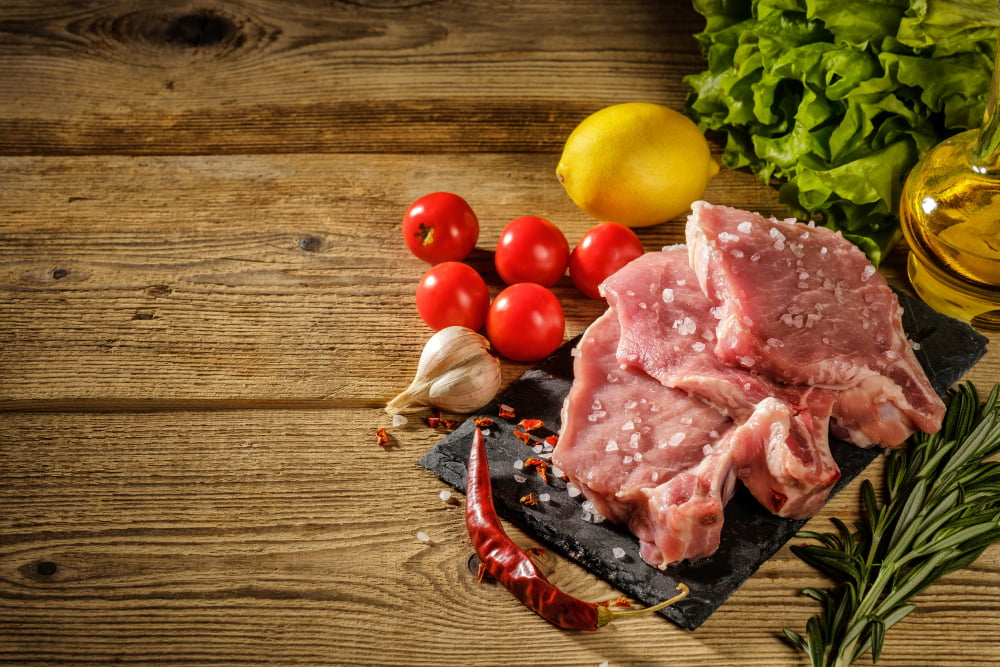
Spicing up smoked pork steaks is an effortless way to expand your barbecuing repertoire. Different rubs, marinades, and brines can profoundly change their flavor profile. For more zing, a lemon-pepper marinade infused with garlic and herbs can be used. For a sweet and smoky variation, consider a blend of brown sugar, smoked paprika, and ground cumin.
If aiming for a Southern touch, an apple cider vinegar mop sauce with a mix of your favorite BBQ spices will hit the spot.
For Asian enthusiasts, consider marinating the steak in a mixture of soy sauce, honey, garlic, and ginger for a delicious teriyaki twist.
Wrapping the pork in bacon before smoking adds an extra layer of smoky flavor, ensuring a moist and tender result.
Another interesting take involves stuffing your pork steak with ingredients like cheese, peppers or apples before smoking.
Remember, when applying a rub or marinade, ensure that the pork steak is evenly coated and allowed to sit covered in the refrigerator for at least 2 hours, or better yet overnight, for maximum flavor absorption.
For those intrigued by cheese-stuffed pork steaks, make a deep horizontal cut through the steak, stuff with chosen ingredients, secure with toothpicks or cooking twine to hold the stuffing in, and proceed with smoking as usual.
Lastly, don’t forget the power of a good BBQ sauce to serve on the side or brush on the steaks in the last few minutes of smoking, to introduce another layer of flavor.
Choosing the Right Wood for Smoking Pork Steaks
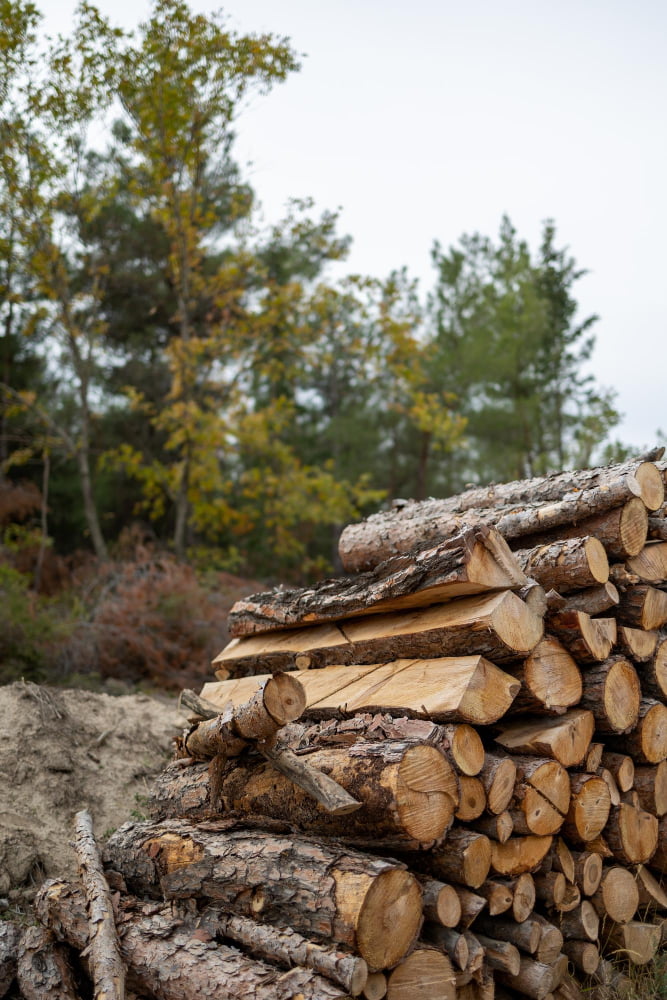
Selecting the ideal wood plays a critical role in achieving the desired flavor for your smoked pork steaks. Specific types of wood impart unique flavors that can subtly influence the meat’s overall taste.
Hardwoods such as oak and hickory are commonly recommended. Oak provides a medium smoky flavor, making it ideal for pork steaks since it won’t overpower the meat’s natural flavor. Hickory, on the other hand, imparts a stronger, distinct smoky taste that bbq fans love.
Fruitwoods like apple and cherry offer a milder and subtly sweet smokiness that complements pork well. Applewood brings a touch of sweetness, while cherry wood adds a mild fruity tint to the smoked steaks.
Avoid using pine or any other soft woods as they contain resin that can give your meat an unpleasant flavor.
Mixing different types of wood, such as a combination of cherry and hickory, can also lead to a unique, delightful smoky flavor. Remember, the key is to experiment until you find the right balance to suit your palate.
Soak the chosen wood in water for about half an hour before adding it to the smoker. This step helps the wood to burn slower, creating more smoke for a longer period.
Safety Tips for Smoking Pork Steaks
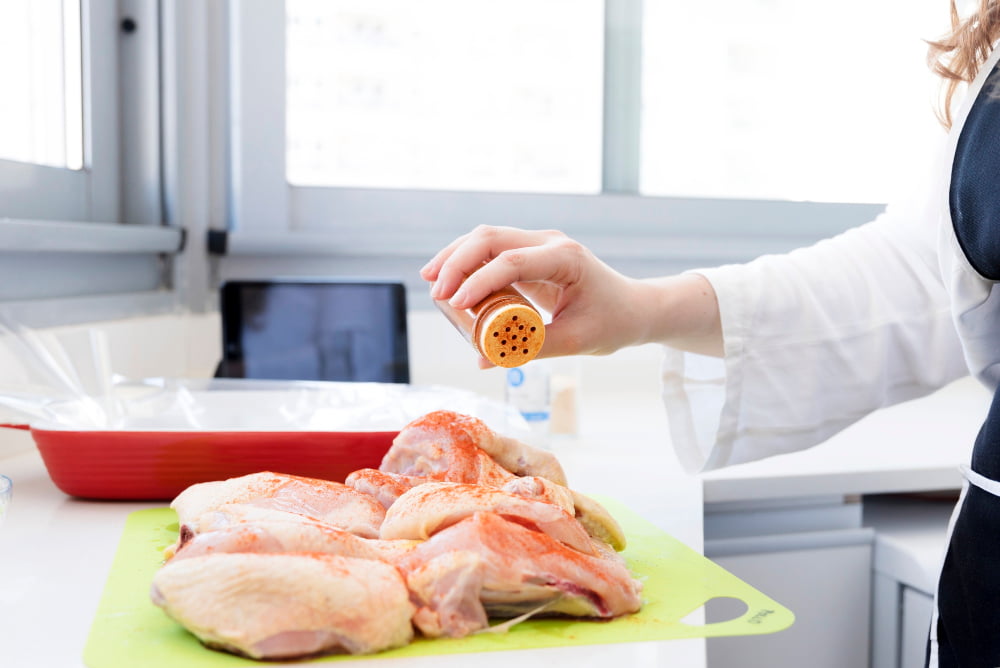
When managing smoker temperature, refrain from adding too much wood or coal at once to avoid overheating, which can cause flare-ups and negatively impact the flavor. The right amount of heat is essential to bring out the best flavor in your pork steaks.
Never leave your smoking steaks unattended. Regularly monitor both the internal temperature of the meat and the smoker’s temperature.
Food safety is paramount, so always prepare your work area properly. Clean everything thoroughly before and after the cooking process.
Cross-contamination needs to be avoided at all costs. Never use the same utensils or cutting boards for cooked and raw meats without first cleaning them.
Ensure your meat reaches an internal temperature of 145°F, the safe temperature for consuming pork. Always use a meat thermometer to check for doneness.
Lastly, store any leftovers in the refrigerator within two hours of cooking to reduce the risk of foodborne illnesses. Use airtight containers to keep your pork steaks fresh.
Understanding the Doneness Levels for Pork Steaks
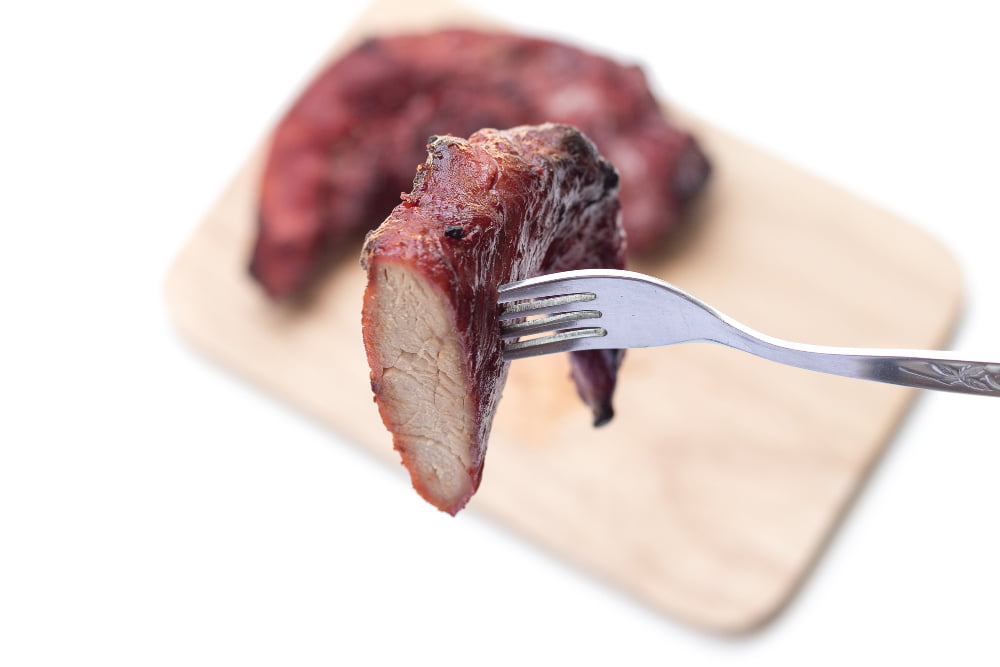
It’s crucial to grasp the safe internal temperature levels when smoking pork steaks. The U.S. Department of Agriculture suggests a minimum internal temperature of 145°F, followed by a 3-minute rest period.
- Rare Pork: Rare pork is not considered safe. Always cook your pork to at least medium-rare.
- Medium Rare Pig: This occurs around 145°F. At this stage, there’s a pink blush in the middle, and it’s perfectly safe to consume.
- Medium Pork: Medium streaks are at 160°F. The meat is uniformly pink and more juicy.
- Well-Done Pork: Well-done pork steaks are at 170°F or higher, and the meat is entirely white.
Utilize a meat thermometer to verify the internal temperature. This handy tool removes the guesswork and ensures that the meat is safe to eat.
Remember to let the meat rest before serving. Resting allows the juices to redistribute throughout the steak, keeping it moist and flavorful.
Always be aware of the importance of preparation and following the cooking times and temperatures accurately. These will ensure optimal flavor and food safety.
Best Sides to Serve With Smoked Pork Steaks
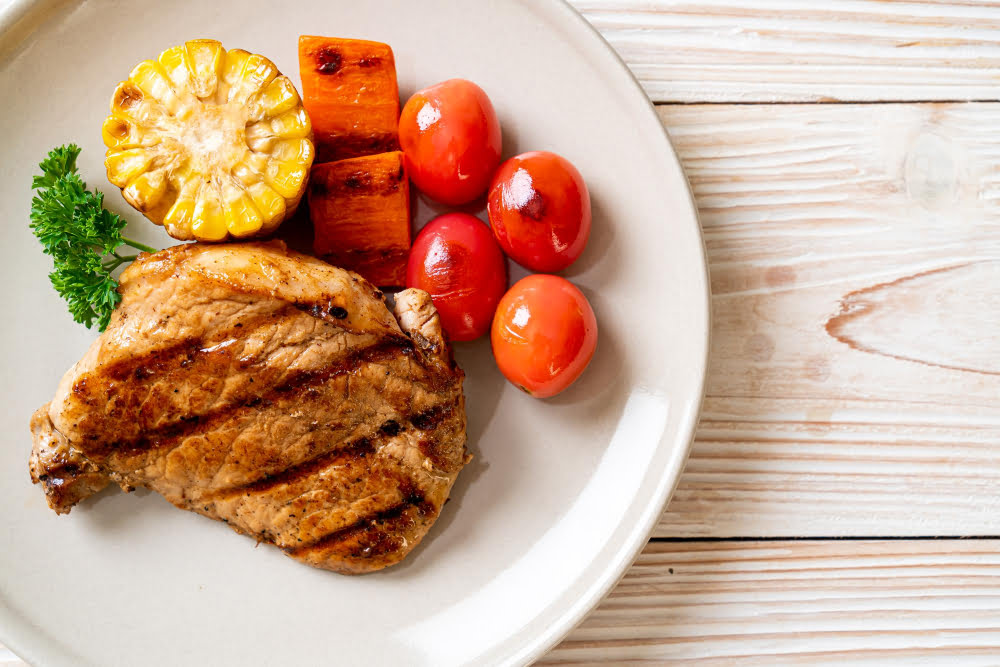
Experience the perfect combination of flavors by pairing your succulent smoked pork steaks with some classic side dishes.
Coleslaw: A refreshing mix of crunchy cabbage, carrots, and a creamy dressing, coleslaw introduces a balance of flavors that complements the robust taste of smoked pork steaks.
Barbecue Beans: Incorporating a savory yet sweet element, these beans cooked in molasses and barbecue sauce can both contrast and highlight the smokiness of the pork.
Grilled Corn on the Cob: A slightly sweet and smoky accompaniment, this option mimic the grilling process. A splash of lime and sprinkle of salt will enhance the overall taste.
Baked Macaroni and Cheese: The rich creaminess of macaroni and cheese adds a comforting element to any meal, and it’s no exception with smoked pork steaks.
Garlic Bread: Crisp, buttery, and aromatic, garlic bread is a simple side dish that plays well with the hearty flavors of smoked meat.
Mixed Grilled Vegetables: An assortment of grilled vegetables like bell peppers, zucchini, and asparagus adds some nutritional value and color to the meal.
Potato Salad: A creamy, tangy traditional potato salad pairs nicely with the smoky, savory flavors of the pork.
Pickles and Onions: Offering a zesty crunch, a side of pickles and raw onions cuts through the meat’s richness, cleansing your palate for the next delicious bite.
Remember, the most crucial part of a meal is the balance of flavors. Pay attention to the combination of sides and your delicious smoked pork steaks for the most satisfying culinary experience.
FAQ
How long do you smoke a pork steak?
A pork steak should be smoked for approximately 2.5 hours at around 225°F or until it achieves an internal temperature of 185°F.
What temperature do you smoke pork steaks?
Pork steaks are typically smoked at a temperature of 225 degrees Fahrenheit for an hour and a half.
What time and temp for smoking pork steaks?
To smoke pork steaks, preheat your smoker to 275 degrees Fahrenheit and smoke for approximately 2 hours.
Do you wrap pork steaks when smoking?
Yes, pork steaks should be individually wrapped in aluminum foil after about an hour of smoking, then continued to cook wrapped for at least another 45 minutes.
What kind of wood is best for smoking pork steaks?
For smoking pork steaks, fruitwoods like apple and cherry are highly recommended as they impart a mild, sweet flavor that complements the meat.
How can you make a rub for smoking pork steaks?
To make a rub for smoking pork steaks, combine ingredients such as brown sugar, paprika, black pepper, salt, chili powder, and garlic powder in the right proportions, ensuring it’s well mixed before applying it to the pork steaks.
How do you prevent pork steaks from drying out during smoking?
To prevent pork steaks from drying out during smoking, it’s vital to maintain a consistent temperature, use a water pan for added moisture, and avoid overcooking by monitoring internal temperature which should reach 145°F.